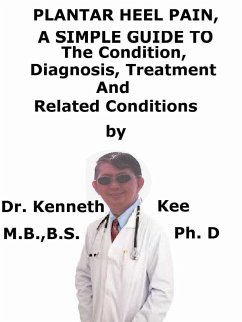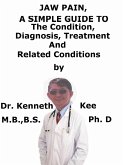Plantar Heel pain is most often a symptom indicating the result of overuse.
It can also be caused by an injury.
Causes
The heel may become painful and swollen from:
1. Shoes with poor support or shock absorption
2. Running on hard surfaces, like concrete
3. Running too frequently
4. Tension or rigidity in the calf muscle or the Achilles tendon
5. Sudden inward or outward turning of the heel
6. Landing hard or uncomfortably on the heel
Disorders that may cause heel pain are:
1. Swelling and pain in the Achilles tendon (Achilles tendonitis)
2. Swelling of the fluid-filled sac (bursa) at the back of the heel bone under the Achilles tendon (bursitis)
4. Swelling of the thick band of tissue on the bottom of the foot (plantar fasciitis)
5. Fracture of the heel bone that is related to landing very hard on the heel from a fall (calcaneus fracture)
Most cases of heel pain have a mechanical cause.
Other causes are:
1. Trauma;
2. Neurological,
3. Arthritic,
4. Infectious,
5. Neoplastic
6. Autoimmune conditions, and
7. Other systemic conditions.
Main disorders causing plantar heel pain are:
1. Plantar fasciitis - the most frequent cause in adults - tenderness at the origin of the plantar fascia (the medial tubercle of the os calcis).
2. Achilles tendonitis - an acute disorder and painful because of acute minor tears and linked inflammatory change
3. Calcaneal apophysitis (Sever's disease), which happens most often in adolescents.
Diagnosis and Assessment
The doctor should always consider trauma in an acute manifestation:
1. Talar injuries often accompany falls on to the feet or after violent dorsiflexion of the ankle.
2. Calcaneal fractures normally accompany a fall from height on to the heel.
3. Fractures are often bilateral.
4. There is swelling, bruising and tenderness over the calcaneum.
5. There may be related injuries to the knees, hips, pelvis, lumbar spine or cervical spine.
6. Talar and calcaneal fractures should be referred for urgent orthopedic assessment.
7. Patients with plantar fasciitis often have higher amount of heel pain with their first steps in the morning or when they stand up after prolonged sitting.
8. There is normally painful palpation at the calcaneal tuberosity and pain is raised with passive dorsiflexion of the toes.
9. Achilles tendonitis is linked with posterior heel pain.
More pain happens with running, jumping, or making quick turns.
There is pain and tenderness over the insertion of the Achilles tendon.
There is often a rise in pain with dorsiflexion of the foot.
10. Calcaneal stress fractures are more likely to happen in athletes who partake in sports that need running and jumping.
11. Tarsal tunnel syndrome may manifest with plantar heel pain followed by tingling, burning or numbness.
12. Symptoms are often started by percussion of the tarsal tunnel or dorsiflexion and eversion of the foot.
Treatment
Home Care
Crutches are used to take weight off the feet.
Rest is important and should be done
Ice should be applied to the painful area.
Acetaminophen or ibuprofen is taken for the pain.
The patient can use a heel cup, felt pads in the heel area, or shoe insert.
Night splints can be worn
Initial treatment choices will be dependent on the diagnosis but are:
1. Rest,
2. Non-steroidal anti-inflammatory drugs (NSAIDs),
3. Local steroid injection,
4. Orthotics
Physiotherapy may be helpful.
If symptoms are not better then surgery may be required - e.g., removal of the prominent posterior superior aspect of the calcaneus and inflamed bursa, the plantar fascia is released from where it attaches to the bone, removal of spur
TABLE OF CONTENT
Introduction
Chap...
Dieser Download kann aus rechtlichen Gründen nur mit Rechnungsadresse in A, B, CY, CZ, D, DK, EW, E, FIN, F, GR, H, IRL, I, LT, L, LR, M, NL, PL, P, R, S, SLO, SK ausgeliefert werden.









